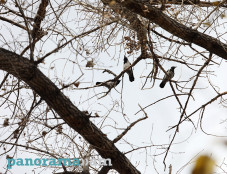
‘Covid toe’ may be side-effect of immune response, study finds
The skin condition known as Covid toe may be a side-effect of the immune system’s response to fighting off the virus, the Guardian reports, citing a study.
The symptom results in chilblain-like inflammation and redness on the hands and feet, with the condition sometimes lasting for months at a time. It typically develops within a week to four weeks of being infected and can result in toes and fingers becoming swollen or changing colour.
Researchers behind the study, which has been published in the British Journal of Dermatology, examined 50 participants with the condition and 13 with similar chilblains lesions that arose before the pandemic.
They found one mechanism behind both types of the condition involved the body generating an immune response with high levels of certain autoantibodies, which mistakenly target and react with a person’s own cells and tissues as well as the invading virus. They also found an overlap with type I interferon, a key protein in the antiviral response.
In addition to the immune system, cells lining blood vessels that supply the affected areas also appeared to play a critical role in the development of Covid toes and chilblains.
The senior author of the study, Dr Charles Cassius, said the research provided a deeper understanding of the condition. “The epidemiology and clinical features of chilblain-like lesions have been extensively studied and published. However, little is known about the pathophysiology involved. Our study provides new insights.”
Concerns were raised in the opening months of the pandemic that so-called Covid toe was one of the non-recognised symptoms of infection, after patients in several countries reported the condition even though, in some cases, they displayed none of the usual symptoms.
Red or purple lesions on the side or sole of the foot or on hands and fingers were described. In May 2020, the European Journal of Pediatric Dermatology reported an “epidemic” of cases among children and adolescents in Italy. It said that, unlike other rashes associated with coronavirus, it had not been previously observed.
Newsfeed
Videos






























